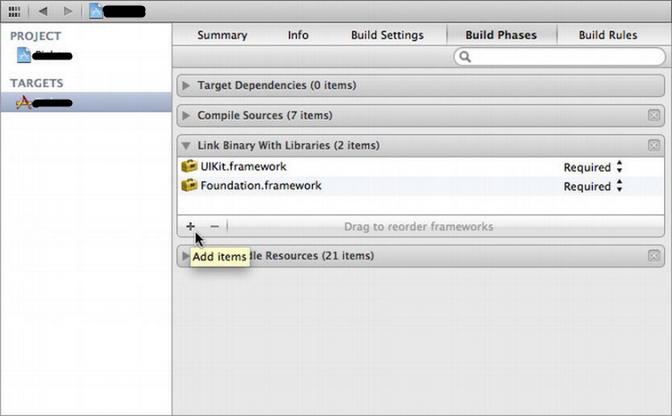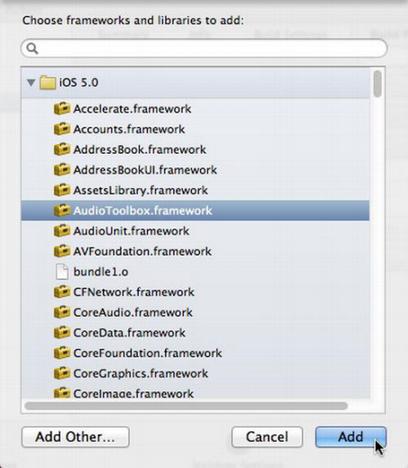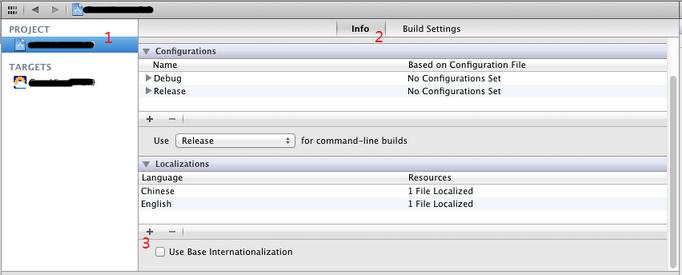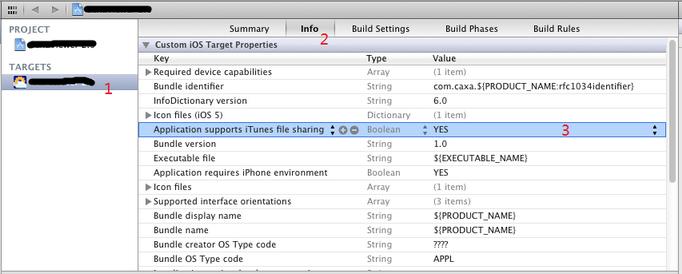1、获取全局的Delegate对象,这样我们可以调用这个对象里的方法和变量:
- [(MyAppDelegate*)[[UIApplication sharedApplication] delegate] MyMethodOrMyVariable];
2、获得程序的主Bundle:
- NSBundle *bundle = [NSBundle mainBundle];
Bundle可以理解成一种文件夹,其内容遵循特定的框架。
Main Bundle一种主要用途是使用程序中的资源文件,如图片、声音、plst文件等。
- NSURL *plistURL = [bundle URLForResource:@"plistFile" withExtension:@"plist"];
上面的代码获得plistFile.plist文件的路径。
3、在程序中播放声音:
首先在程序添加AudioToolbox:
其次,在有播放声音方法的.m方法添加#import:
- #import<AudioToolbox/AudioToolbox.h>
接下来,播放声音的代码如下:
- NSString *path = [[NSBundle mainBundle] pathForResource:@"soundFileName" ofType:@"wav"];
- SystemSoundID soundID;
- AudioServicesCreateSystemSoundID ((__bridge CFURLRef)[NSURL fileURLWithPath:path], &soundID);
- AudioServicesPlaySystemSound (soundID);
4、设置和获取类中属性值:
- [self setValue: 变量值 forKey: 变量名];
- [self valueForKey: 变量名];
5、让某一方法在未来某段时间之后执行:
- [self performSelector:@selector(方法名) withObject:nil afterDelay:延迟时间(s)];
6、获得设备版本号:
- float version = [[[UIDevice currentDevice] systemVersion] floatValue];
7、捕捉程序关闭或者进入后台事件:
- UIApplication *app = [UIApplication sharedApplication];
- [[NSNotificationCenter defaultCenter] addObserver:self selector:@selector(applicationWillResignActive:) name:UIApplicationWillResignActiveNotification object:app];
applicationWillResignActive:这个方法中添加想要的操作
8、查看设备支持的字体:
- for (NSString *family in [UIFont familyNames]) {
- NSLog(@"%@", family);
- for (NSString *font in [UIFont fontNamesForFamilyName:family]) {
- NSLog(@"\t%@", font);
- }
- }
9、为UIImageView添加单击事件:
- imageView.userInteractionEnabled = YES;
- UITapGestureRecognizer *singleTap = [[UITapGestureRecognizer alloc] initWithTarget:self action:@selector(yourHandlingCode:)];
- [imageView addGestureRecognizer:singleTap];
10、添加多语言支持:
比如Image Picker这样的组件,它上面的按钮的文字是随着设备语言环境的改变而改变的,但是要先在工程添加语言:
11、使程序支持iTunes这样的设备,比如可以使用PC端的工具往程序的Documents中拖放文件:
12、页面切换效果设置:
- controller.modalTransitionStyle = UIModalTransitionStyleCoverVertical;
- [self presentModalViewController:controller animated:YES];
可供使用的效果:
- UIModalTransitionStyleCoverVertical //新视图从下向上出现
- UIModalTransitionStyleFlipHorizontal //以设备的长轴为中心翻转出现
- UIModalTransitionStyleCrossDissolve //渐渐显示
- UIModalTransitionStylePartialCurl //原视图向上卷起
恢复之前的页面:
- [self dismissModalViewControllerAnimated:YES];
13、获取截屏
- - (UIImage *)getScreenShot {
- UIGraphicsBeginImageContext(self.view.bounds.size);
- [self.view.layer renderInContext:UIGraphicsGetCurrentContext()];
- UIImage *image = UIGraphicsGetImageFromCurrentImageContext();
- UIGraphicsEndImageContext();
- return image;
- }





































